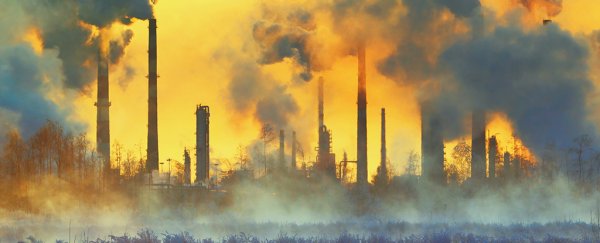Anthropogenic global warming is a theory explaining today's long-term increase in the average temperature of Earth's atmosphere as an effect of human industry and agriculture.
For well over a century, scientists have been concerned that as the concentration of greenhouse gases in the atmosphere increases, so will the planet's capacity to retain heat.
Since the latter half of the 20th century, growing banks of data and improved climate models have convinced most climate scientists that rising trends in greenhouse gas emissions are directly responsible for a rising trend in atmospheric temperature.
The source of these emissions vary, consisting of a mix of gases that include methane and carbon dioxide. While some sources -such as volcanoes - are natural, their overall emissions compared with those produced by human industries, transport, and livestock have been regarded as insignificant over recent centuries.
How do greenhouse gases contribute to global warming?
Greenhouse gases are made of molecules that absorb electromagnetic radiation, such as the light reflecting from the planet's surface, and reemit it as heat. These gases include methane, carbon dioxide, water, and nitrous oxide.
Despite making up only a small percentage of the atmosphere's mix of gases they are very important. If we had no naturally occurring greenhouse gases in the atmosphere at all, the average global temperature on Earth would be a much lower -18 degrees Celsius (0 degrees Fahrenheit) instead of the roughly 15 degrees Celsius (59 degrees Fahrenheit) we have enjoyed most of human history.
Carbon dioxide levels have steadily risen over the past two centuries, thanks largely to the burning of fossil fuels for electricity general, transportation, and smelting. Current levels are approximately 415 parts per million (ppm), up from pre-industrial levels of around 280 ppm.
This has so far seen an increase in average global temperatures over the past half century of just one one degree. Models vary in their predictions of further temperature increases, and depend heavily on future trends in greenhouse gas emissions. Conservative estimates by the Intergovernmental Panel on Climate Change predict an even chance of 4 degrees Celsius rise by the end of the century if current emissions trends continue.
All topic-based articles are determined by fact checkers to be correct and relevant at the time of publishing. Text and images may be altered, removed, or added to as an editorial decision to keep information current.
